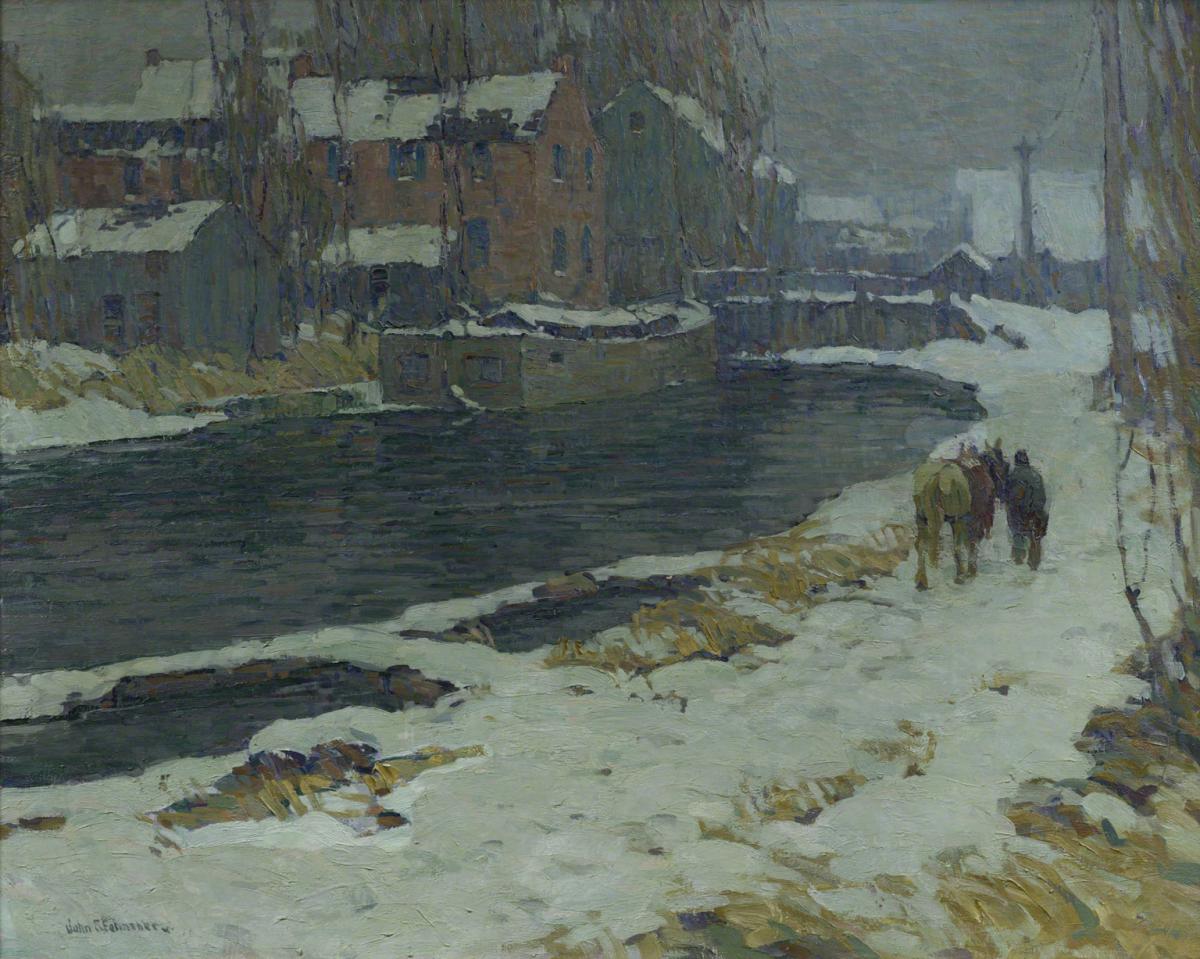Grey Thaw
John Folinsbee ( 1920 )

Grey Thaw is a recent gift to The Phillips Collection from the Corcoran Gallery of Art. Awarded the Third William A. Clark Prize at the 8th Corcoran Biennial (1921–22), it is a standout work in the Phillips’s small collection of New Hope (Pennsylvania) impressionist pictures. Duncan Phillips was introduced to John Folinsbee’s work in 1916 at the Corcoran’s 6th Biennial (1916–17), from which he bought the artist’s large exhibition canvas The Bridge at New Hope (1916). By 1921, the year he opened his museum, Phillips had reluctantly exchanged his big Folinsbee for a smaller work by the artist, Along the Canal (1919–20), which remains a valued early acquisition in the collection. Through the Corcoran’s gift, the Phillips is once again the holder of a major early work by this distinguished American artist, whom Phillips admired from the outset of his journey as a collector of American painting.
Folinsbee developed a sense for capturing light and atmosphere early in his career from his studies with Birge Harrison and John Carlson in Woodstock, New York. In 1916 he moved to New Hope, some forty miles north of Philadelphia on the Delaware River. By the second decade of the twentieth century, this small village in Bucks County had developed into a year-round artists’ colony. Its leading artists—Daniel Garber, William Lathrop, Edward Redfield, and Robert Spencer— had been embraced by the critics as the embodiment of the populist spirit of America. With the exception of Lathrop, they primarily painted out-of-doors and were especially well known for their winter scenes.
Folinsbee’s early New Hope years were spent exploring the rivers, canals, and bridges that defined this rural community. The Delaware, Lehigh and Raritan canal systems, which date from the 1830s, were still active, with mules towing canal boats and barges along the towpaths until 1932. Although a committed plein air painter, Folinsbee, who was confined to a wheelchair because of childhood polio, could not accommodate large canvases outdoors. Thus, works like Grey Thaw are studio paintings developed from oil sketches, drawings, and notes about color and light crafted into final compositions that speak not only to place, but also to emotional memory and response. In Grey Thaw, Folinsbee presents the grand sweep of the snowy towpath alongside the New Hope canal, where a solitary man walks with his mule through heavy snow. One of the many barges can be seen tied up on the opposite bank. The village’s tightly clustered buildings are pushed to the top third of the composition. In the distance, a small snow-covered bridge links the towpath to the village. Even with its large scale, Grey Thaw retains the sense of place and intimacy that Duncan Phillips valued as the essential hallmarks of the New Hope school.
Text by Susan Behrends Frank, adapted from Seeing Differently: The Phillips Collects for a New Century (The Phillips Collection in association with Giles, 2021)